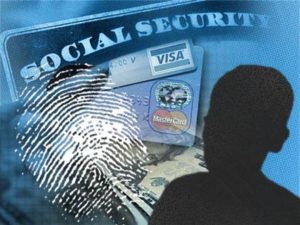It’s a very basic question – how do you prove you are who you say you are? Most people are honest and have nothing to hide. But it’s a sad fact that employers can’t take anyone at face value. They have to go through the process of verifying identity of everyone who applies to work with them. There are a number of reasons for doing this, and a variety of ways to go about it.
Why are employers verifying identity?
 Depending on the role, employers might only do very basic checks on people applying to work with them. If an employer is recruiting people for unskilled work, or for a short term, they might not be concerned with issues like credit checks and criminal records. However, there are a couple of basic checks which all employers have to do. The first is to establish the nationality of employees, and make sure they are working legally. Failure to do this can result in stiff financial penalties. Secondly, if the employee is to be paid through the PAYE system, the employer will need a National Insurance number.
Depending on the role, employers might only do very basic checks on people applying to work with them. If an employer is recruiting people for unskilled work, or for a short term, they might not be concerned with issues like credit checks and criminal records. However, there are a couple of basic checks which all employers have to do. The first is to establish the nationality of employees, and make sure they are working legally. Failure to do this can result in stiff financial penalties. Secondly, if the employee is to be paid through the PAYE system, the employer will need a National Insurance number.
Other roles need more detailed checking. There are many occupations which need a criminal records check. These used to be called CRB checks but the terminology has changed and you’ll apply for a DBS check now instead. Banks or building societies might run credit checks on applicants. You might be asked for references, or to bring in university certificates to prove your qualifications. Each organisation is differnet in the level of checking which they do.
How do I prove who I am?
Don’t take it personally that an employer is asking you to prove that you are who you say you are. They have a legal obligation to make sure you’re not an illegal worker. In order to avoid discrimination, they run the same checks on everyone and can’t pick and choose. There’s a 31 page official government document to help them decide what checks they wish to do.
Employers will usually ask for various documents to prove who you are. The best proof of identity is something issued by a government department, which has your photo on it. The best examples are your passport or driving licence. Passports issued by another country overseas or national identity cards are also great ways of proving your identity. If you don’t have a passport or a driving licence, then you might be able to show other official photocards, such as a student card along with something like your birth certificate. The photograph element is really the key, so that the employer can match up your face with the official documents.
Online verification
The government system for identity verification is slightly different, but has the same aim. You’ll have to use the online system to register for doing tax returns online, for example. Enter your basic personal details with things like your passport number and national insurance number. Once you have verified once with the system, you don’t need to go through the process again.